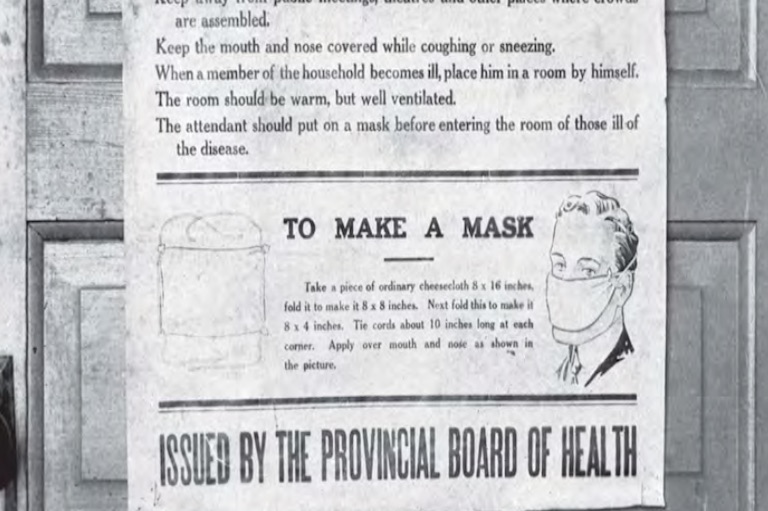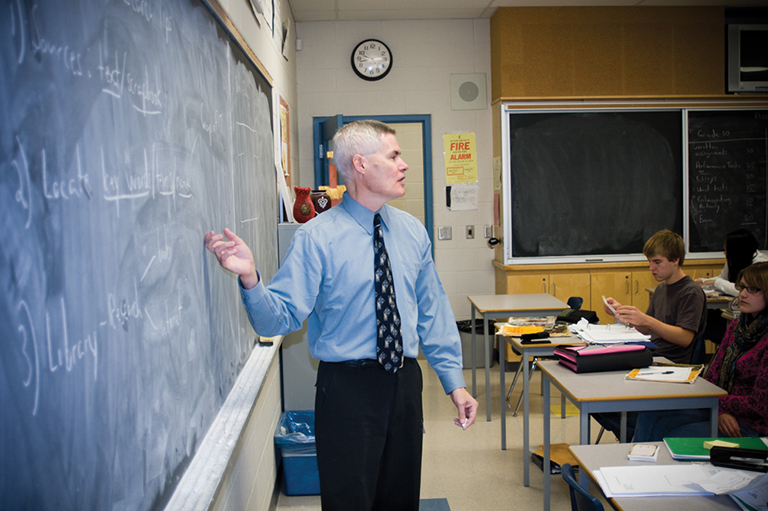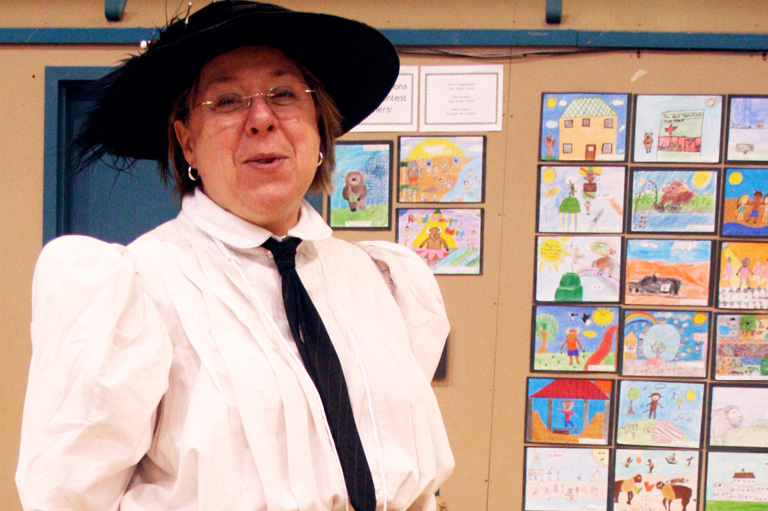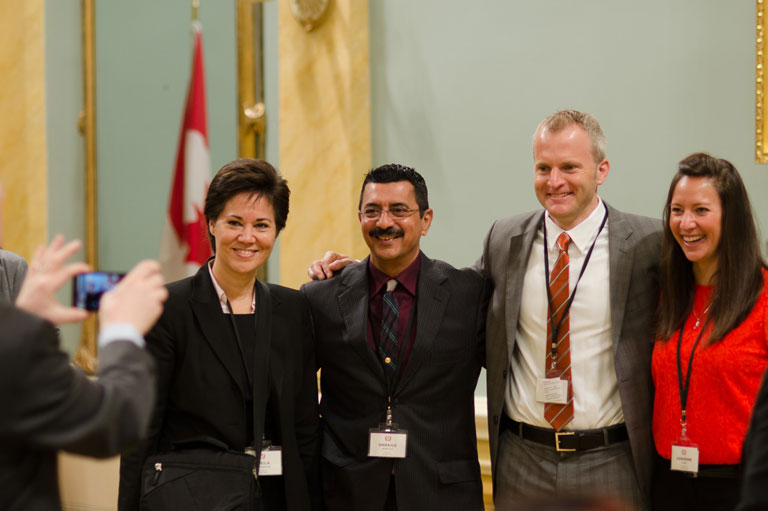Get Thee to a Museum
-
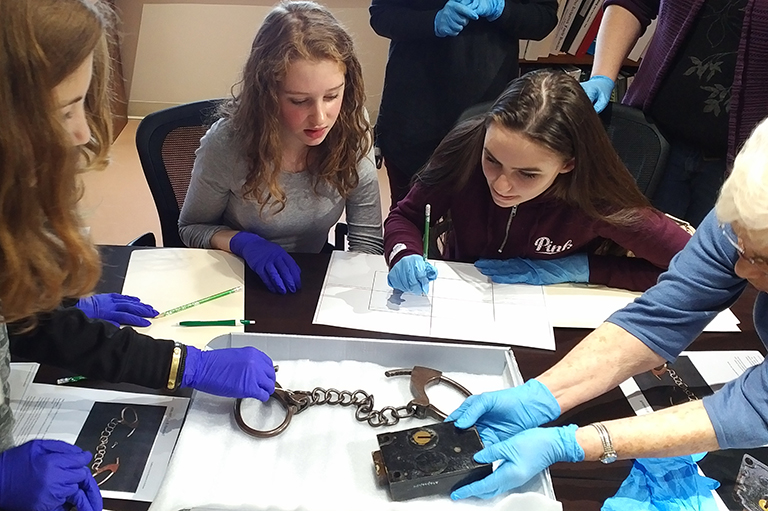 DHP Students look for the "Key" to interpreting artifacts for context, making inferences and assessing for historical significance - here, conducting a 'place-mat' analysis.The Digital Historian Project (DHP)TM
DHP Students look for the "Key" to interpreting artifacts for context, making inferences and assessing for historical significance - here, conducting a 'place-mat' analysis.The Digital Historian Project (DHP)TM -
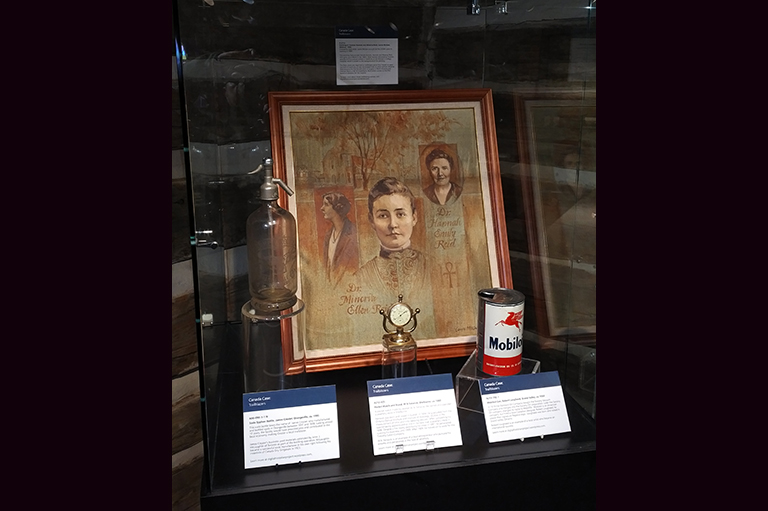 DHP 2017 Canada Case Exhibition featuring artifacts from DCMA Collection - this case highlights local "Trailblazers" for "Canada150 in Dufferin County"The Digital Historian Project (DHP)TM
DHP 2017 Canada Case Exhibition featuring artifacts from DCMA Collection - this case highlights local "Trailblazers" for "Canada150 in Dufferin County"The Digital Historian Project (DHP)TM -
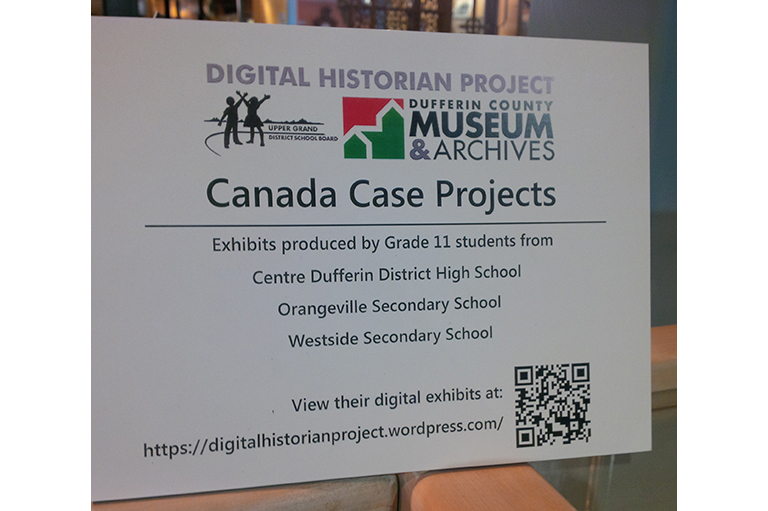 DHP students curate artifacts from the DCMA Collection for their exhibition entitled " The Canada Case" - the 2017 theme is "Canada150 in Dufferin County"The Digital Historian Project (DHP)TM
DHP students curate artifacts from the DCMA Collection for their exhibition entitled " The Canada Case" - the 2017 theme is "Canada150 in Dufferin County"The Digital Historian Project (DHP)TM -
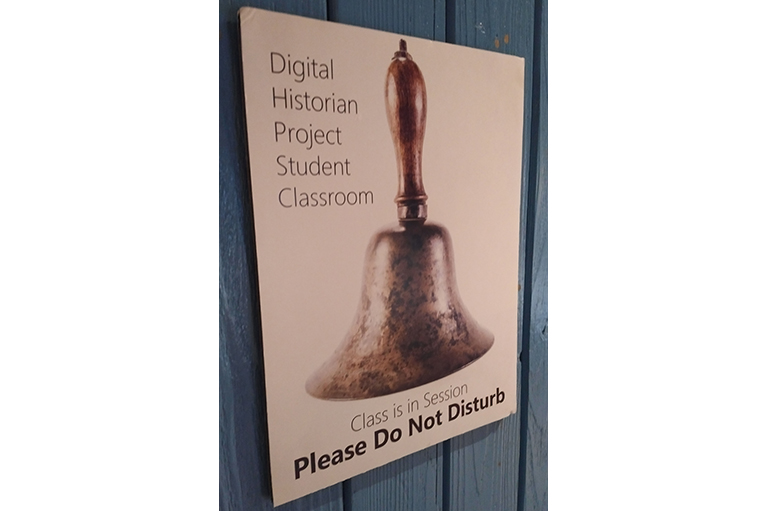 DHP student's 'classroom' in a 160 year-old Dufferin County Orange Lodge reconstructed within the DCMA CollectionThe Digital Historian Project (DHP)TM
DHP student's 'classroom' in a 160 year-old Dufferin County Orange Lodge reconstructed within the DCMA CollectionThe Digital Historian Project (DHP)TM -
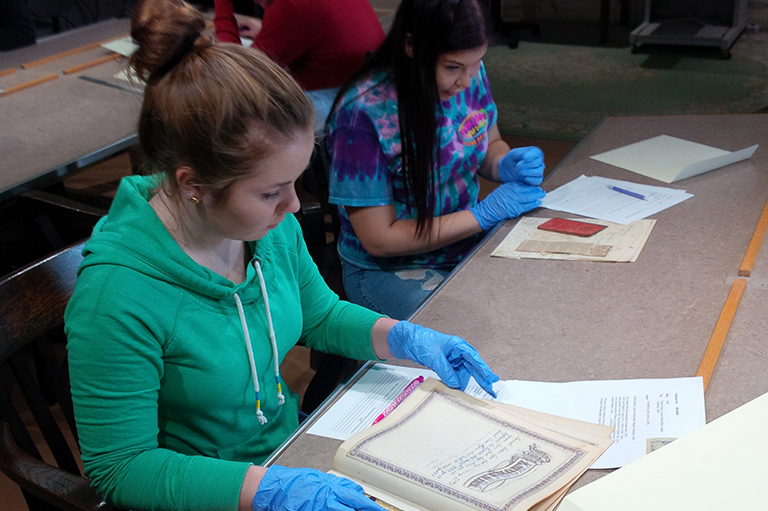 DHP students Hannah & Kathryn learn archival analysis and research methods using documents from the DCMA Archives, in preparation for The Canada Case.The Digital Historian Project (DHP)TM
DHP students Hannah & Kathryn learn archival analysis and research methods using documents from the DCMA Archives, in preparation for The Canada Case.The Digital Historian Project (DHP)TM
So what is a passionate, committed history teacher to do to engage students in a rich museum experience — one that will not just capture their imagination, but also be enjoyable? While the answer is both attainable and a piece of common sense, it does not mean it is simple.
Full disclosure: I teach in Dufferin County, Ontario — a largely rural setting, where I have been taking students to our municipal museum and archives on regular visits for twenty-five years. The museum has an excellent educational program and a full-time teacher who designs museum programs carefully aligned to Ontario Ministry of Education curricula. However, I also take students to Toronto, Ottawa, the United States, and to Europe annually.
Let’s start with three fundamental premises of museum visits: 1. all visits should have a purpose. 2. All visits should be intentional. 3. The goal of the visit should be to derive meaning. Please note that “entertainment” is not a foundational premise. While the essential question associated with the visit could be about engaging students with a positive museum experience, the better question to answer would be more about getting students to come back to the museum again and again. It’s about developing a historical consciousness in which museum visits are a part of life.
Museum Visits with Purpose
Step 1 — Do your homework, teachers!
If your museum is local, this is easy. However, if you are travelling to a museum as part of an experiential learning excursion, then make use of online collections and portals, and contact the museum staff to help you organize your tasks. Most collections are now digitized (either whole or in part), and virtually every museum has an outreach educational programmer. Give yourself lots of time at the museum — don’t be cheap — make a day of it.
Step 2 — Task-Oriented
Students require specific and clearly achievable tasks. Designing a museum visit with a clear purpose seems obvious. Yet, all-too-often such visits devolve into nothing more than glorified scavenger-hunts or (God forbid!) tours. Such tasks should be framed as essential questions to answer.
For example: “Was Dufferin County life in the 1920s determined more by religious affiliation or by occupation?”
Step 3 — Authenticity
Again, tasks must be hands-on and have clear authenticity. Primary materials from the collection or archives should be in their hands as soon as they arrive, if at all possible. Phones should be out and photography should be underway. Students should be comparing items, measuring and suggesting narratives. Working closely with the museum staff, pre-select many more artifacts than you have students on the visit. This is to allow for student-choice, but be sure to task them with “responsibility” for the item. Ensure that there is appropriate archival detail on each artifact.
For example: The assignment we regularly have students start their museum task with is called History/Mystery, which is a variation on the “History Detectives” theme. Have students respond to (or better, ask) inferential questions about each artifact they examine. You can design a handy template for this: mind-map / place-mat / semantic web.
Step 4 — Accountability
This is a simple step and yet so purposeful. Have the students present or teach one artifact that they are responsible for. Ensure that they answer the essential question with evidence from their artifact, making inferences about the item. They can do their presentation digitally or (better yet) live at the museum.
For example: Allow only two minutes for each presentation and have them answer any three of their questions.
B - Making Museum Visits Intentional
Step 5 — A Learning Continuum
We have had great success taking students to the museum, designing scaffolded activities that (ideally) reflect a K-12 continuum. Museum educators can assist you in these designs. For secondary students, one visit is not enough. They should be in the museum from Grade 9 on, building a historical skillset with each visit. The one we use, reflects the Ontario Canada & World Studies curricula and the integration of the Historical/Geographic Thinking Concepts:
For example:
Grade 9 — Geographic location/ mapping & spatial awareness
Grade 10 — Compare / Contrast / Cause & Effect / Perspective
Grade 11 — Historical Significance & Ethical Dimension
Grade 12 — Context in History
Step 6 — Creating Content
Students need to know that they are stakeholders in a museum; that they have “ownership” in the case of a municipal museum, where their family pays taxes. For larger institutions, that they can have a “voice” in the story. Having students conceptualize where they “fit in” to the story of Canada matters. So why not give the students an opportunity to create physical or digital content for the museum? Utilizing twenty-first century digital immersive competencies, students can participate in a museum community as never before — any website can have a “Student Blog.”
For example: We have negotiated a two-month long task in which our students
research, design, construct and present a “CANADA CASE” for the museum. Using a dedicated WordPress website, the students each contribute an analysis of one museum artifact for which there is known provenance and no completed research. Using authentic curatorial standards and criteria, students design both a physical and digital display. The cases are on display in the museum, while the WordPress site becomes a menu option on the museum website. See the 2017 Canada Case projects.
Step 7 — Repeat Steps 1-6 often!
Making the museum a regular part of your history department programming is essential. Pre-determine the visits.
For examples: When guest speakers are welcomed put them at the museum and take the students there. Organize a 1920’s concert or show a Second World War movie or plant a Victory Garden or invite in some local re-enactors or conduct an Indigenous Storytellers evening and have a smudging ceremony. All can occur at the museum if they are your partner.
C - Making Museum Visits Meaningful
Step 8 — Self-Curation
Whatever work students complete at/through/with their museum visits should be self-curated. Allowing students to design and produce digital profiles that display their best work is key to making the student experience meaningful. Using any kind of media, students can now easily demonstrate their learning in multiple platforms. An essential component is to have the students design meaningful reflections on their experiential learning. This can be done through digital narration, blog posts, or discussion boards.
For example: Students routinely create a video to demonstrate their most meaningful artifact or document in the museum collection to reflect 1950’s fashion, 1930’s agriculture, post-war Prohibition etc.
Step 9 — The Digital Historian Project (DHP)TM
Built on our many years of work with the local museum, we initiated a more formal partnership in 2013. We pulled three schools together to offer a four-credit senior history/math program, taught in situ at the museum. With an eye to engaging Grade 11s in deep primary research, The Digital Historian Project students utilize First World War data to inform their historical understanding, while conducting investigations into the records of local veterans. Learning to manage historical statistics within the broader context of Canadian history, Indigenous studies and archival research opens an entirely new history “pathway” through school.
For example: Using comprehensive First World War data from Attestation Papers, students analyze a large sample (say, all Ontario Canadian Expeditionary Force volunteers in 1916 with the surname starting with a “B”) to make inferences about recruitment patterns prior to the introduction of conscription. Furthermore, how well are these patterns reflected locally or among Indigenous soldiers, if such data can be located. DHP students are tasked with producing an IBook chapter based upon their research.
The DHP is featured on the Ontario Ministry of Education “EDUGains” website.
See the Digital Historian Project website for more details.
Step Ten — Be Innovative!
If it’s meaningful to the students, that is often because it’s clearly meaningful to you! Working with the museum requires constant experimentation and inventiveness. Grade 11 students regularly ask me: “what are we doing at the museum this semester?” They sign up again for Grade 11 History because they had a positive experience in Grade 10 History, and they often eagerly await whatever new experiment we’re going to try next.
For example: Relying upon my museum partners to generate new exhibits from year to year, can guide where I wish to go in my history class from semester to semester. Two years ago, it was a neat exhibit on Trench Art; last year, it was photography and this year, Temperance and Prohibition. Each year, the local museum affords me a fascinating portal into Canadian history, through which I can take my classes.
As every provincial Ministry of Education works to incorporate Experiential Learning principles into curricula, history teachers should be at the vanguard. Purposeful, intentional and meaningful learning opportunities outside the confines of the traditional classroom have never been more necessary for critical inquiry. If we design robust experiences for our students at the museum, the possibility exists that they may just keep coming back - both to our classrooms and the museum!
Themes associated with this article
Advertisement

